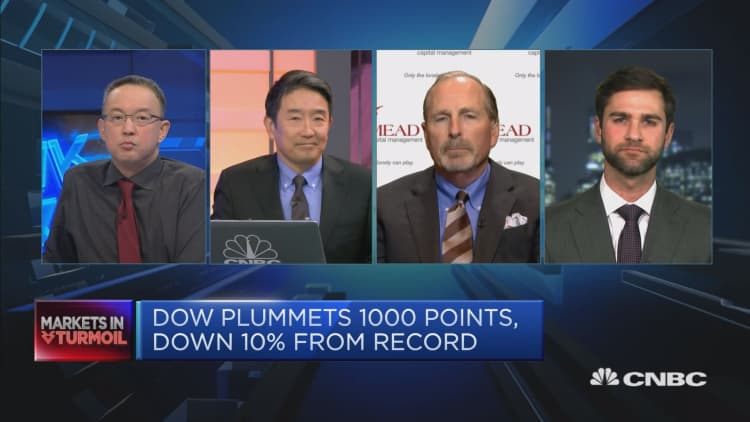
The recent period of mild volatility is what's making the current market sell-off appear so shocking, according to two experts.
On Thursday, U.S. stocks fell sharply as strong earnings and economic data were not enough to quell jitters on Wall Street. The fell more than 1,000 points and entered correction territory — it is also on track to post its biggest weekly decline since October 2008. Meanwhile, the S&P 500 fell 3.75 percent and the declined 3.9 percent on Thursday.
"It's just been an unusually long period of mild volatility that makes this seem so rough," Bill Smead, CEO and CIO of Smead Capital Management, told CNBC's "Squawk Box" on Friday.
Smead said there's about a 30 percent chance of losing money from the time an investor enters the stock market to a year later. But because of low volatility in recent years, that hadn't been the case. "It's just been so long since we did that, that this (sell-off) seems so shocking," he said.
"If you go back and look at the first 15 or 20 years I was in the business, from say 1980 to 2000, you have a 10 percent decline peak to trough almost every year that I've been in the business, except this last year-and-a-half," Smead explained.
The sell-off started last Friday morning when the U.S. labor department reported that average hourly earnings increased more than expected in January. Though it was a good news for workers who had flat wages for years, investors became nervous because it meant rising wage pressures and inflation could force the Federal Reserve to raise interest rates higher than the market was expecting.
As a result, volatility in the market rose. On Tuesday, a key measure of market volatility, the CBOE Volatility Index, briefly rose above 50 — the highest level since August 2015. On Friday morning Asia time, the VIX hovered near 33.
"When you see volatility start to rise, it really starts to impact the market in a way that we haven't seen in a long time, which is that there's risk in the system again," Jay Jacobs, vice president and head of research at Global X Funds, told CNBC's "Squawk Box." The market had become expensive because the global economy was doing well, there was strong earnings growth and there was no risk in the system, he said.
"Obviously a lot of people are looking at the 10-year Treasury and they're looking at deficit spending, but it's the second-order effect of now stocks having risk in them and that changes the equation for how you price in that risk," Jacobs said. He added that a lot of buying and selling in the market was investors adjusting their risk assumptions for 2018.
That said, the stock market turmoil may not end anytime soon due to ongoing developments in the bond market that could see the yield on the 10-year Treasury could break the 3 percent level faster than most had expected.
Jacobs added that investors trying to trade in the "short-term-driven market" needed to increase their risk tolerance and be willing, and able, to lose.
"If you're a long-term investor, you can look at this recent pullback as a buying opportunity simply because valuations look more attractive now," he said.
— CNBC's Patti Domm, Jeff Cox, Tae Kim and Fred Imbert contributed to this report.


